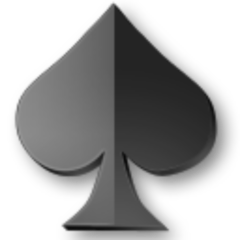
When you think of a domino, you may imagine the little rectangular wood pieces lined up in long rows that someone will knock over. However, the word has other meanings, as well. It’s also used to describe a type of mask worn at a masquerade, as well as the term for the effect that one small trigger can have on a larger chain of events.
The origin of the word is disputed, but it may be derived from the Latin dominus, or master. It first referred to a type of monastic hood, then to a hooded mask, and eventually to the individual pieces that make up a domino set.
A domino is a small rectangular wood or plastic block, shaped like a truncated cone and usually double-sided with an arrangement of spots or dots resembling those on a die. Each domino has a line in the middle that visually divides the identity-bearing side into two squares, called ends, and an identifying mark on each end, which is normally either blank or identically patterned to the other. A domino is normally twice as long as it is wide, but different sets have varying sizes.
Most of the time, a domino is used in positional games. Each player takes turns placing dominoes edge-to-edge against each other in such a way that the adjacent ends match, or form a certain total, or both. This creates a chain that can be “knocked over” by the next domino played to it.
This type of game can be very entertaining, especially when more than one person is involved. The determining factor is the number of dominoes that can be lined up before they’re all knocked over, or “played.” This is why it’s important to play on a flat surface so that each piece can stand on its own.
It’s also possible to make domino puzzles, where the challenge is to place a set of dominoes in such a way that they form a specific pattern. These are fun for people of all ages, and are often used in school classrooms to reinforce concepts such as fractions and patterns.
In business, the term domino is also used to refer to an event or situation that could cause a series of other events to occur, such as a political crisis or an economic downturn. This is often referred to as the domino effect, and it’s important for leaders to be aware of how a single domino can impact their organization.
In addition, the domino principle can also be applied to personal and professional goals. To achieve the most success, it’s important to identify good tasks that have a major impact, then prioritize them and focus on them until completion. These are the tasks that will serve as your dominoes, and they will help you accomplish your bigger goal. In fact, many of these dominoes will actually have their own ripple effects on others. For example, completing a financial plan may inspire other people to start their own plans and begin the domino effect.
